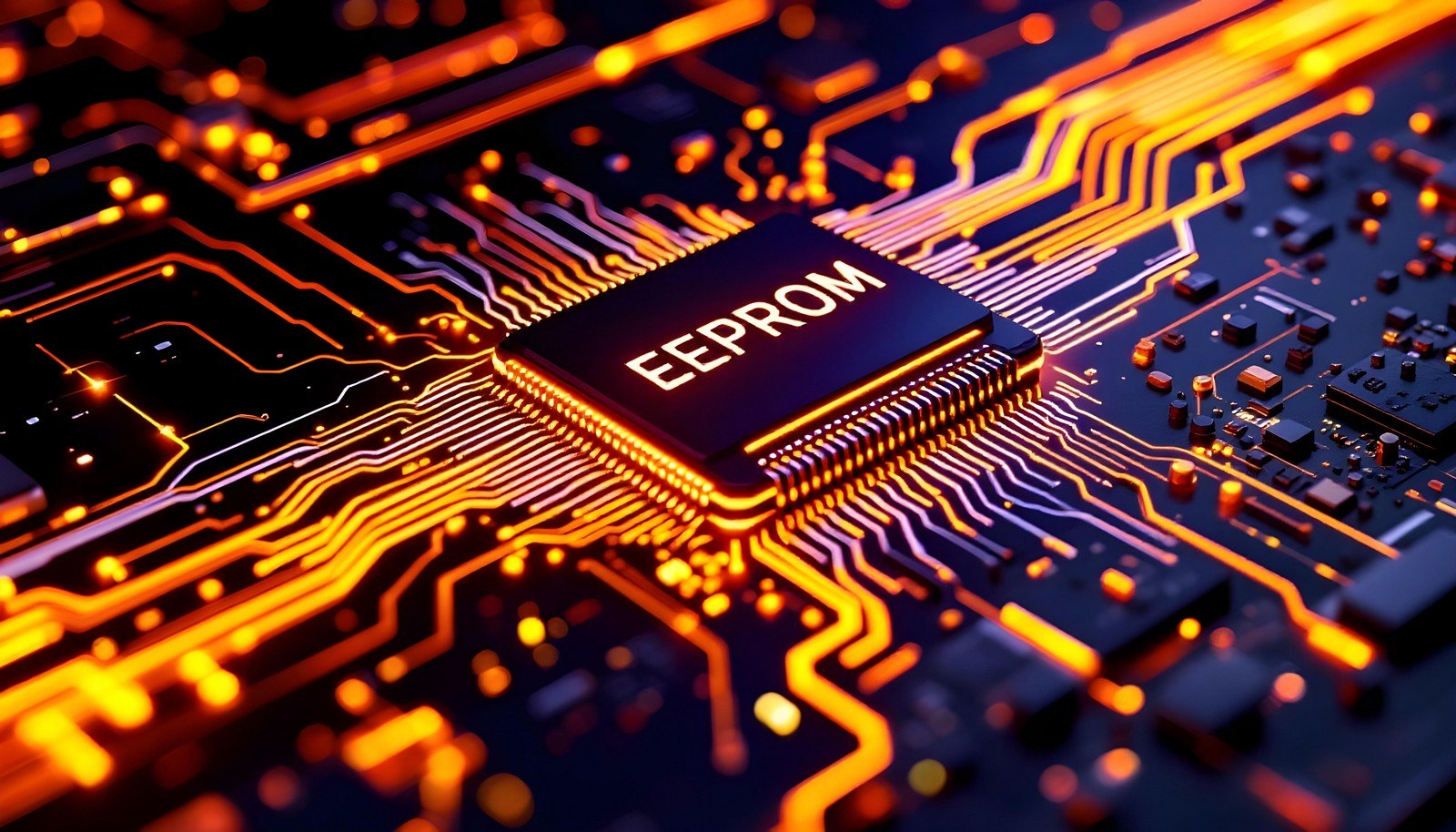EEPROM

Quick Navigation:
- EEPROM Definition
- EEPROM Explained Easy
- EEPROM Origin
- EEPROM Etymology
- EEPROM Usage Trends
- EEPROM Usage
- EEPROM Examples in Context
- EEPROM FAQ
- EEPROM Related Words
EEPROM Definition
EEPROM, or Electrically Erasable Programmable Read-Only Memory, is a type of non-volatile memory that allows data to be electrically written and erased at the byte level. Unlike traditional ROM, which is programmed during manufacturing, EEPROM can be rewritten multiple times without requiring special equipment. It is used for storing small amounts of data that must persist when power is turned off, such as configuration settings in embedded systems.
EEPROM Explained Easy
Think of EEPROM as a notebook where you can write notes and erase them when you need to. It keeps your notes safe even when the notebook is closed (like turning off a computer). This makes it perfect for saving important information that you don’t want to lose.
EEPROM Origin
EEPROM was developed as an evolution of earlier types of ROM, such as EPROM (Erasable Programmable Read-Only Memory), to provide the flexibility of electrical erasure and reprogramming, eliminating the need for ultraviolet light or special hardware.
EEPROM Etymology
The term "EEPROM" originates from the acronym for Electrically Erasable Programmable Read-Only Memory, reflecting its ability to be erased and reprogrammed electrically.
EEPROM Usage Trends
Over the decades, EEPROM has transitioned from being a niche technology to a common feature in embedded systems and microcontrollers. While newer non-volatile memory types like flash memory have overtaken EEPROM in storage density, it remains widely used due to its ability to rewrite data at a granular level.
EEPROM Usage
- Formal/Technical Tagging:
- Embedded Systems
- Non-Volatile Memory
- Microcontrollers - Typical Collocations:
- "EEPROM chip"
- "EEPROM storage capacity"
- "EEPROM read/write cycles"
- "EEPROM configuration settings"
EEPROM Examples in Context
- An EEPROM chip in a washing machine stores the user’s custom washing settings.
- In microcontrollers, EEPROM stores firmware updates or calibration data.
- Some cars use EEPROM to save diagnostic codes for mechanics to analyze faults.
EEPROM FAQ
- What is EEPROM?
EEPROM is a type of memory that can store data permanently and allows byte-level erasure and reprogramming. - How does EEPROM differ from flash memory?
EEPROM can erase and rewrite data at the byte level, while flash memory typically operates in larger blocks. - Where is EEPROM used?
It’s used in embedded systems, automotive electronics, and other applications needing persistent, editable storage. - How long does EEPROM retain data?
Most EEPROMs can retain data for over 10 years, depending on the manufacturer. - Can EEPROM wear out?
Yes, after a certain number of write cycles (often 10,000 to 1,000,000), EEPROM can degrade. - How is EEPROM programmed?
EEPROM is programmed electrically, often via microcontroller interfaces or specialized tools. - Why is EEPROM important in embedded systems?
It stores critical data like configuration settings or system states that must persist across power cycles. - What are the write and erase speeds of EEPROM?
Writing and erasing EEPROM is slower compared to volatile memory like RAM. - Can EEPROM be replaced with flash memory?
In some applications, yes, but flash lacks EEPROM’s fine-grained write/erase capability. - What happens if EEPROM fails?
If EEPROM fails, stored data may become corrupted, leading to system malfunctions.
EEPROM Related Words
- Categories/Topics:
- Non-Volatile Memory
- Embedded Systems
Did you know?
EEPROM was initially more expensive and less durable compared to flash memory. However, its ability to store small but critical data for decades has made it indispensable for automotive systems, where reliability is paramount.
PicDictionary.com is an online dictionary in pictures. If you have questions or suggestions, please reach out to us on WhatsApp or Twitter.Authors | Arjun Vishnu | @ArjunAndVishnu

I am Vishnu. I like AI, Linux, Single Board Computers, and Cloud Computing. I create the web & video content, and I also write for popular websites.
My younger brother, Arjun handles image & video editing. Together, we run a YouTube Channel that's focused on reviewing gadgets and explaining technology.



Comments powered by CComment